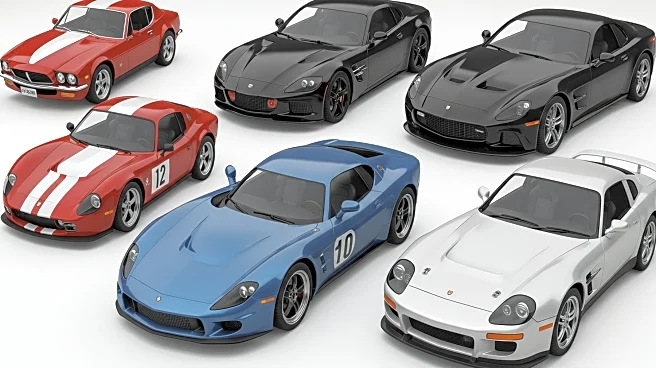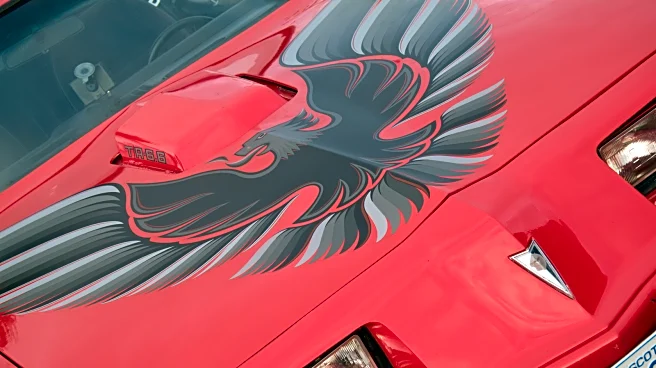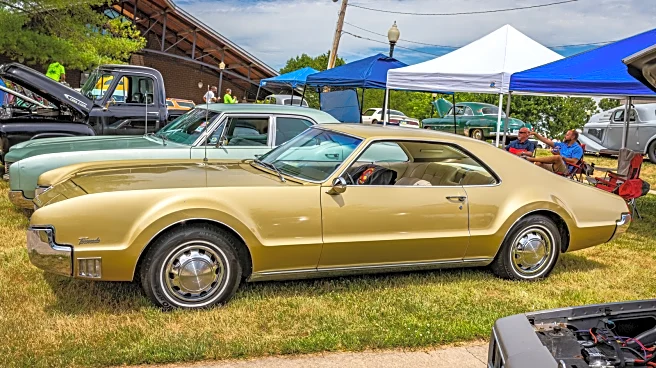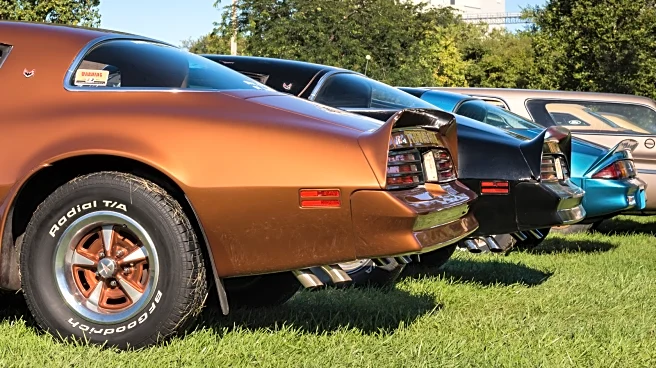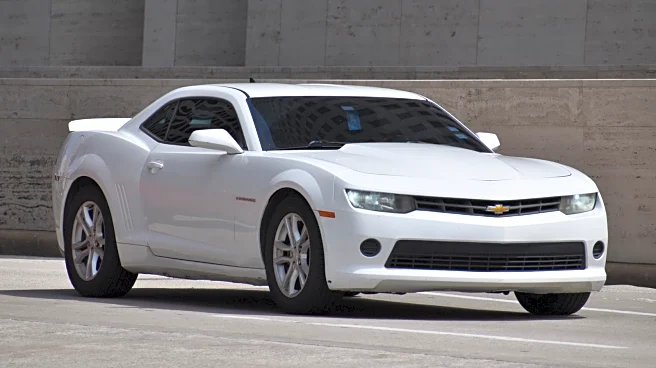What is the story about?
What's Happening?
The iconic hood decal of the Pontiac Trans-Am, a model under General Motors, has a rich history rooted in design influences from the 1950s. The Firebird name, initially inspired by General Motors' gas-turbine-powered concept cars, was officially used for production in 1967. The emblem on these cars was originally based on a piece of southwestern Native American jewelry, specifically a Hopi bird pendant. However, the more aggressive hood bird seen on the Trans-Am was designed by automotive designer Bill Porter. Porter, influenced by American glass designer Louis Comfort Tiffany's vase art, sketched a bird with sweeping, featherlike tendrils, which evolved into the well-known decal.
Why It's Important?
The design evolution of the Pontiac Trans-Am hood decal reflects broader trends in automotive design and cultural influences. General Motors' ability to incorporate artistic elements into car design showcases the intersection of art and engineering, enhancing brand identity and consumer appeal. This historical design choice highlights the importance of cultural and artistic influences in the automotive industry, contributing to the legacy and nostalgia associated with classic car models like the Trans-Am. It underscores the role of designers in shaping automotive aesthetics and the lasting impact of their creative decisions.
What's Next?
As General Motors continues to innovate and evolve its vehicle designs, the legacy of models like the Pontiac Trans-Am may influence future design choices. The company might explore new ways to integrate cultural and artistic elements into modern vehicles, potentially reviving classic design motifs for contemporary models. This could lead to renewed interest in vintage aesthetics among car enthusiasts and collectors, driving demand for retro-inspired designs in the automotive market.
Beyond the Headlines
The story of the Pontiac Trans-Am hood decal also touches on the broader cultural significance of automotive design. It reflects how car manufacturers can draw inspiration from diverse sources, including Native American art and historical design movements, to create unique and memorable brand symbols. This approach not only enriches the visual appeal of vehicles but also fosters a deeper connection with consumers who appreciate the cultural and artistic heritage embedded in car designs.
AI Generated Content
Do you find this article useful?
